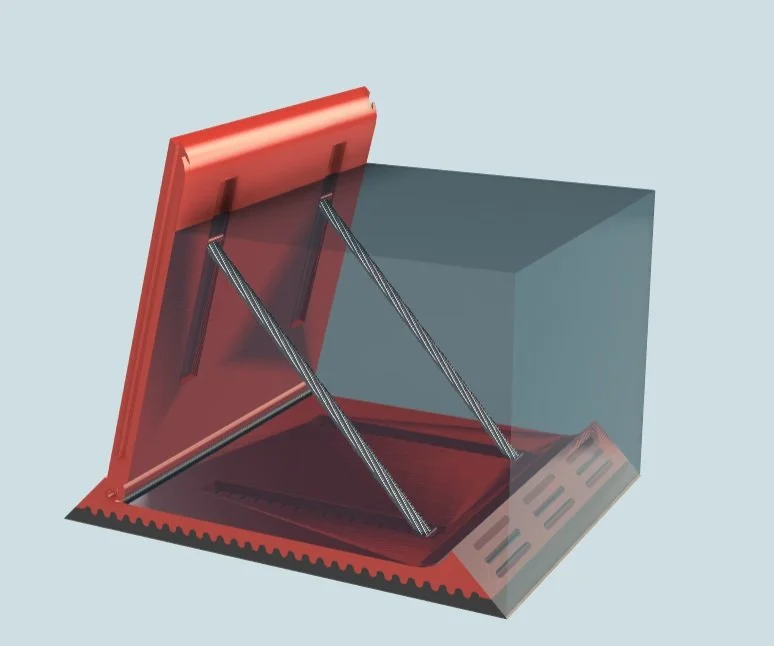Modular Passive flood barrier
2023 - Present
I designed a modular passive flood barrier for urban settings in a humanitarian engineering course. Currently, I’m prototyping the concept on a small scale using 3D Printing, and I hope to continue working after finishing the course. As water levels rise, the water flows through the grate and lifts the buoyant top made of recycled plastics (polypropylene and polyethylene). At 75 degrees the plastic hinge locks in and the cable connecting the two inset bars becomes taut. The barrier is 2 feet tall at full height and flattens to 3.5 inches when water levels return to normal. There’s rubber on the bottom for grip and on the gasket protecting the hinge. The modules connect to form a resilient flood barrier, capable of protecting against flooding. All the modeling and rendering was completed in Fusion360
(See below for more information and design features)
I researched recycled plastics in the form of polypropylene and polyethylene as flood barriers and found evidence proving the materials to be structurally viable, cheaper than most alternatives, and sustainable.
To prevent large installations, I designed a connecting piece to accommodate different sizes. I used 2-foot long and wide barriers for increased strength and versatility.
I needed the hinge to be water-resistant, and for coastal cities, salt-water resistant. Avoiding the traditional metal hinge, the plastic hinge is protected by a rubber gasket and revolves around the center before encountering stoppers at 75 degrees. (The black material is the rubber gasket in the photo)
The best measures for flood protection involve large infrastructure changes, but with costs and time for installation, many businesses I urban settings will still receive damages. I had three design goals: To make it modular for different size boundaries, cost-effective for more accessibility, and passive so business owners won’t need to travel through flooded roads for protection.
I noticed most passive flood barriers were incredibly expensive and required large installation processes. Non-passive barriers were often cheaper, but need to be reinstalled with each new flood warning. I wanted to fix this gap.
(Units are in inches)











